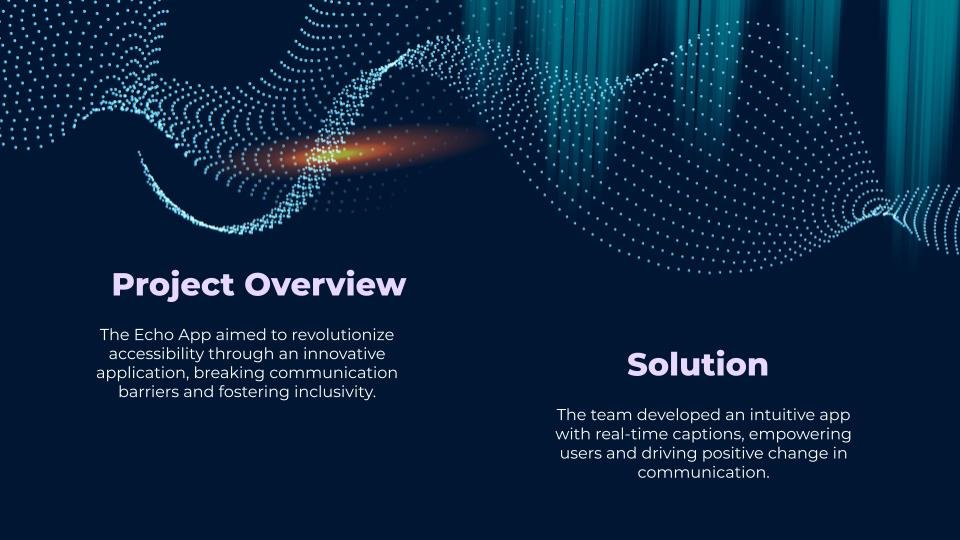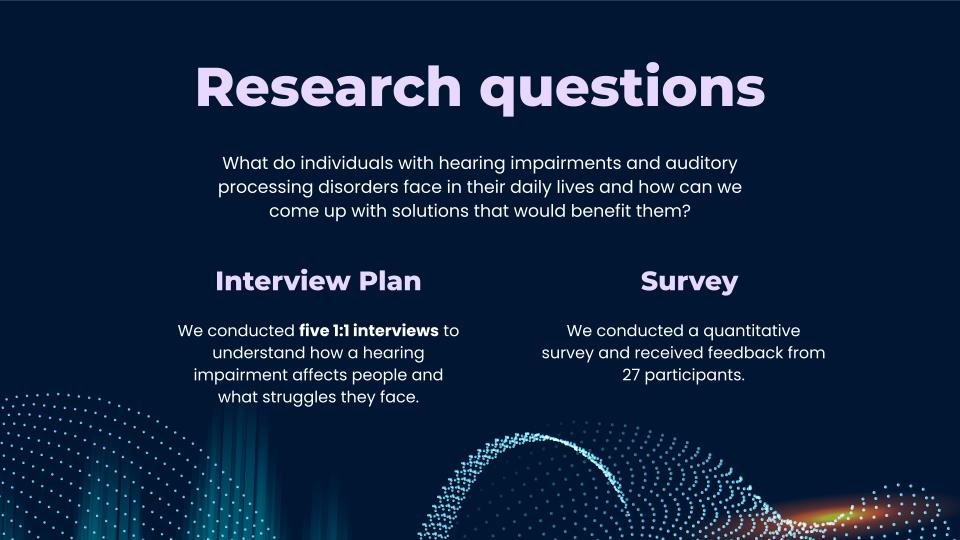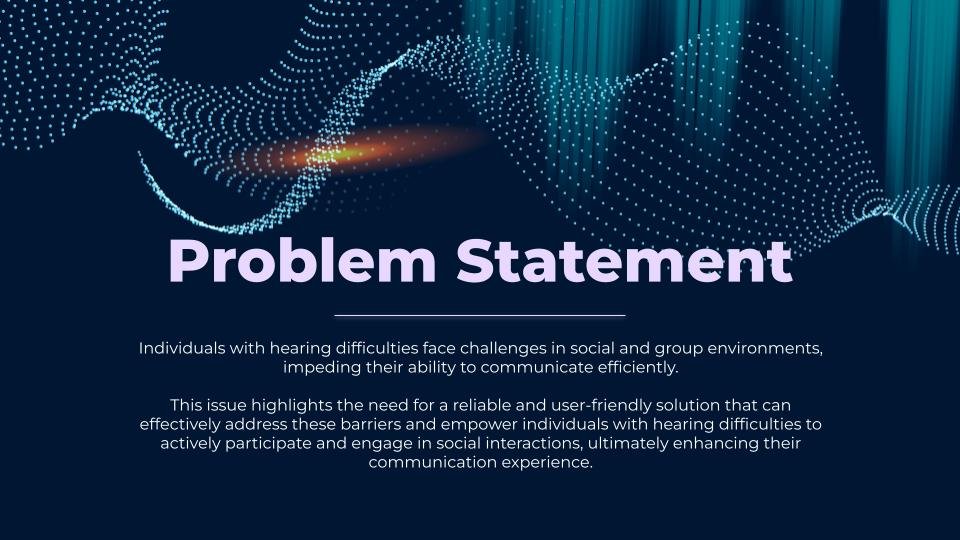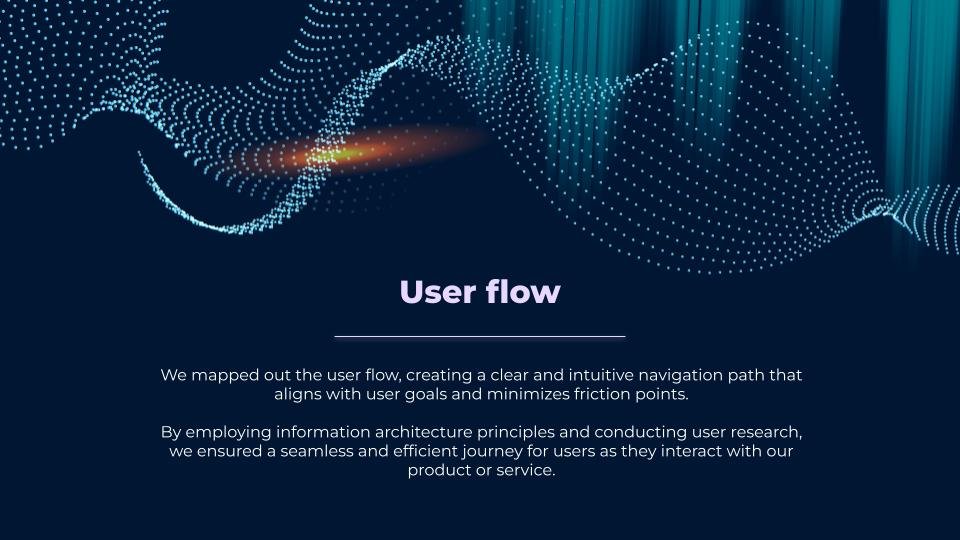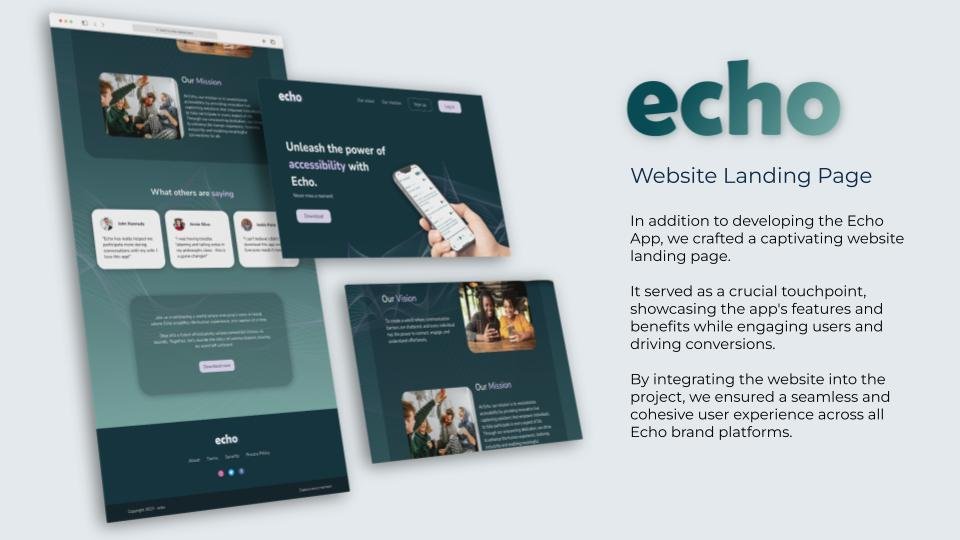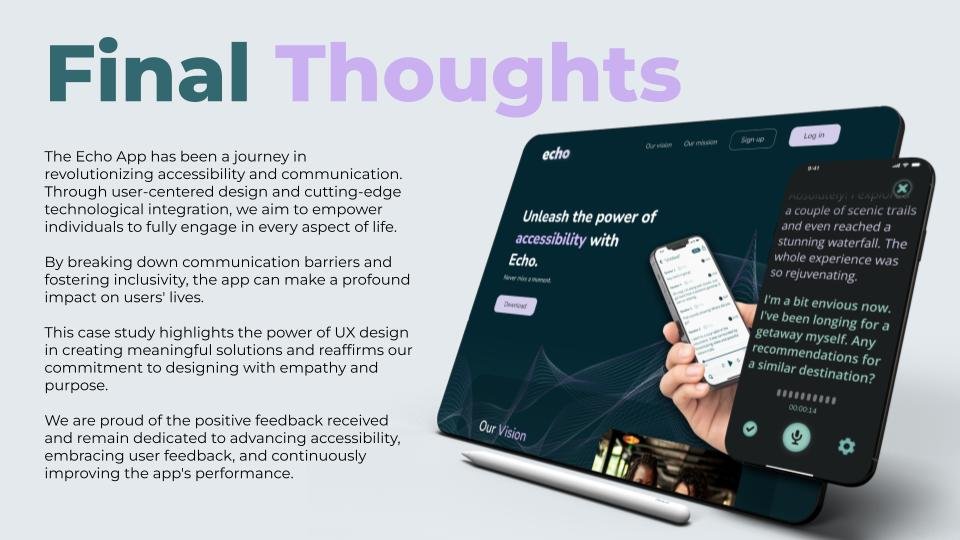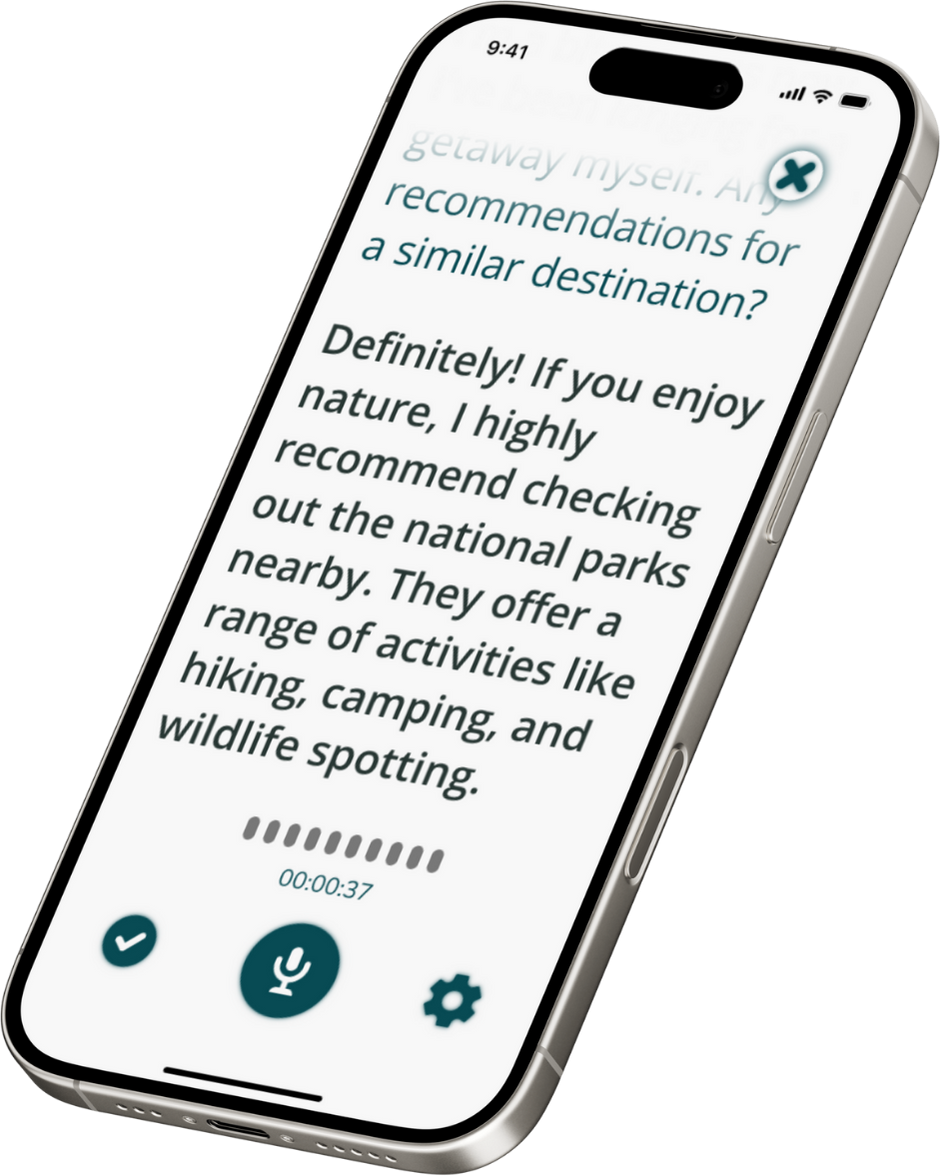BRIDGING COMMUNICATION GAPS
With Real-time AI Captioning
We set out to develop an AI-integrated product to aid those with hearing loss or impairments. Through research we discovered that a subtle and simple solution to the challenges of hearing in especially noisy environments was what our intended users needed most.
We developed a concept for an app that would use AI-based voice recognition to provide captioning to live conversations, that could serve stand-alone, or as an accompaniment to tools such as hearing-aids.
Design Choices:
Readability First
Our research showed that users needed to be able to access captions quickly, without effort or visual clutter.
To maximize accessibility, we prioritized text clarity over decorative elements. This led us to design full-page text displays with minimal distractions. Typography was carefully chosen for legibility, and we incorporated adjustable settings like dark mode and half-bold text to support different preferences and visual needs.
Integration Potential
We designed ECHO not only as a stand-alone product but also with future compatibility in mind. By ensuring the app could complement both existing and future hearing aids and smart devices, we opened pathways for seamless integration into users’ everyday assistive technology.
FLexibility and Customization
Because hearing impairments vary widely, flexibility was crucial. We built in personalization options such as font size, background contrast, and screen orientation, allowing individuals to tailor the interface to their environment. These choices support both discreet use in one-on-one conversations and more visible use in group settings.
Or look through our case study:
